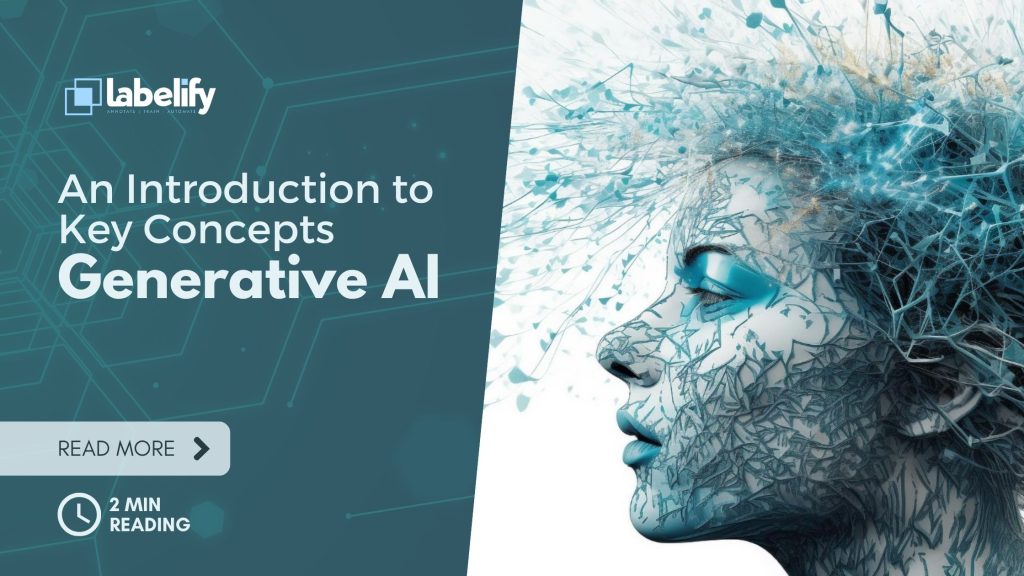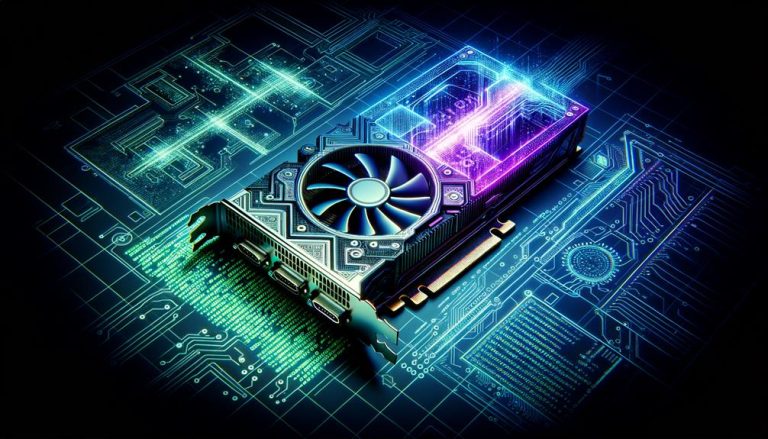
We’re here to take you on an exciting journey into the world of Generative AI. In this article, we’ll give you a complete overview of the techniques and applications that make this field so groundbreaking.
With unsupervised and semi-supervised learning algorithms, Generative AI can process data and generate outputs, creating art, design, code, and even writing.
Join us as we explore the limitless possibilities and revolutionary impact of Generative AI on various industries.
Let’s dive in and liberate our imagination!
Key Takeaways
- Generative AI uses unsupervised and semi-supervised learning algorithms to process data and generate outputs.
- Generative AI can create art, design, code, write blogs, and generate various types of high-quality content.
- Human involvement is still essential in the training process of generative AI models.
- Generative AI is used in arts to create AI-generated visuals and generate new artworks with similar features and styles.
Overview of Generative AI Techniques
Our overview of generative AI techniques will explore the various methods employed in training and generating outputs through unsupervised and semi-supervised learning algorithms.
Generative AI techniques involve training algorithms that utilize neural network architecture to learn from specific inputs and produce similar content.
Transfer learning is one such technique where pre-trained models are used as a starting point for training new models, enabling faster and more efficient learning.
Reinforcement learning is another technique that involves training models through trial and error, with positive reinforcement for desired behaviors.
These techniques allow generative AI models to continuously learn and improve based on their mistakes, leading to the creation of high-quality outputs.
Applications of Generative AI
Moving forward into the applications of generative AI, let’s explore how this technology is being utilized in various fields to revolutionize creativity, gaming, healthcare, and more.
- In the field of arts, generative AI is used to create AI-generated visuals and generate new artworks with similar features and styles. It can change the style or specific areas of an image and offer a finalized version of the design.
- In gaming, generative AI is used to generate new levels, dialogue options, maps, and virtual worlds for immersive experiences. It helps in creating new experiences for players and enhancing the gaming industry.
- In healthcare, generative AI models help identify health issues early and can convert MRI scans into CT scans, providing more comprehensive medical imaging. However, the deployment of generative AI also raises ethical implications and potential risks and challenges that need to be carefully addressed.
Generative AI has the potential to transform various fields, but it’s important to navigate its deployment with caution, ensuring ethical considerations and mitigating any potential risks.
Generative AI in Arts
Now let’s delve into how generative AI is transforming the field of arts.
How can generative AI be utilized to create AI-generated visuals and generate new artworks with similar features and styles?
Generative AI in arts is revolutionizing the creative process by enabling the creation of AI-generated visuals and the reproduction of artistic styles.
Through the use of neural networks, generative AI models can analyze vast amounts of artistic data and learn to mimic the characteristics and styles of specific artists.
This technology allows for the generation of new artworks that possess similar features and styles to those of renowned painters and sculptors.
Generative AI in Gaming
Generative AI in gaming enhances player experiences by generating new levels, dialogue options, maps, and virtual worlds for immersive gameplay. This technology revolutionizes the gaming industry, offering endless possibilities and pushing the boundaries of what’s possible in virtual reality.
Here are three ways generative AI is transforming gaming:
- AI-generated game characters: Generative AI can create intelligent and lifelike game characters with unique personalities, skills, and behaviors. These characters adapt and evolve based on player interactions, creating dynamic and engaging gameplay experiences.
- Virtual reality in gaming: Generative AI is invaluable in creating realistic virtual reality environments. It can generate detailed and immersive worlds for players to explore, from bustling cities to fantastical landscapes, enhancing the sense of presence and immersion in virtual reality gaming.
- Unlimited creativity: Generative AI allows game developers to rapidly generate new content, leading to an increase in the number of games created annually and the invention of new genres. It opens up a world of unlimited creativity, empowering developers to create unique and innovative gaming experiences for players.
Generative AI in gaming is revolutionizing the way we play, offering unprecedented levels of immersion, creativity, and personalization. As the technology continues to advance, we can expect even more exciting and transformative experiences in the world of gaming.
Generative AI in Healthcare
The application of generative AI in healthcare involves the use of advanced algorithms to improve early disease detection and enhance healthcare outcomes. With the ability to convert MRI scans into CT scans, generative AI models provide more comprehensive medical imaging, enabling healthcare professionals to make more accurate diagnoses and treatment plans.
However, the implementation of generative AI in healthcare also presents challenges. One of the key considerations is the ethical implications of using AI in healthcare, such as ensuring patient privacy, data security, and transparency in decision-making processes.
Additionally, integrating generative AI into existing healthcare systems requires addressing technical and regulatory hurdles, as well as ensuring the trust and acceptance of both healthcare providers and patients.
Despite these challenges, the potential of generative AI in healthcare is immense, promising to revolutionize early disease detection, personalized medicine, and overall healthcare outcomes.
Training Process in Generative AI
To understand the training process in generative AI, we delve into the intricate steps involved in training the neural network. The training process in generative AI presents several challenges that need to be addressed. Some of these challenges include:
- Data quality and quantity: Obtaining a large and diverse dataset is crucial for training generative AI models. However, ensuring the quality and relevance of the data can be a complex task.
- Computational resources: Training generative AI models requires significant computational power and memory. Adequate resources are necessary to handle the complex calculations involved in training large-scale models.
- Ethical considerations: The training process in generative AI raises ethical concerns, particularly in relation to the generation of realistic fake content. Ensuring responsible use and preventing misuse of generative AI technology is vital.
Addressing these challenges and considering ethical considerations are essential steps in the training process of generative AI models, leading to the development of more robust and responsible AI systems.
Continuous Improvement in Generative AI Models
As we delve into the topic of continuous improvement in generative AI models, it is important to consider the various techniques and strategies employed to enhance their performance. Challenges in training generative AI models can arise due to the complexity of the task and the need for large and diverse datasets. Ethical considerations in generative AI development must also be addressed, such as the potential for bias and misuse of AI-generated content. To overcome these challenges and ensure ethical development, researchers and developers are actively exploring methods such as transfer learning, reinforcement learning, and adversarial training. Transfer learning allows models to leverage pre-trained knowledge, reinforcement learning enables models to learn from feedback, and adversarial training enhances model robustness. By continuously improving generative AI models, we can unlock their full potential while ensuring responsible and beneficial use in various domains.
| Techniques for Continuous Improvement | Strategies for Enhanced Performance |
|---|---|
| Transfer learning | Feedback-based learning |
| Reinforcement learning | Regular model updating |
| Adversarial training | Diversity in training data |
| Model optimization | Collaborative research |
| Iterative refinement | Continuous evaluation |
Impact of Generative AI on Various Industries
Continuously improving generative AI models through techniques like transfer learning and reinforcement learning has had a significant impact on various industries. Here are three ways generative AI is transforming different sectors:
- Healthcare:
Generative AI models are helping healthcare professionals detect health issues early by converting MRI scans into CT scans. This technology has the potential to revolutionize early disease detection and personalized medicine. However, ethical considerations, such as data privacy and security, need to be addressed to ensure responsible use.
- Arts:
Generative AI is revolutionizing the art industry by creating AI-generated visuals and generating new artworks with unique styles and features. It can transform images, modify specific areas, and even offer finalized versions of designs. Future developments in generative AI will expand artistic possibilities and empower artists in their creative process.
- Gaming:
Generative AI is enhancing the gaming industry by generating new levels, maps, and virtual worlds, providing players with immersive experiences. The ability to generate realistic and dynamic content opens doors for new game genres and increased game creation. Future developments in generative AI will continue to push the boundaries of gaming innovation.
As generative AI continues to advance, it’s crucial to consider ethical implications and future developments to harness its potential for the betterment of various industries.
Frequently Asked Questions
How Does Generative AI Differ From Other Forms of AI?
Generative AI differs from other forms of AI by its ability to create new content and generate outputs without the need for explicit instructions. It has the potential to revolutionize various industries, including healthcare and the creative arts.
In healthcare, generative AI can assist in early disease detection and personalized medicine.
In the creative industries, it can have a significant impact by creating AI-generated visuals, generating new artworks, and enhancing gaming experiences.
Its potential applications are vast, and its impact on creative industries is profound.
Can Generative AI Models Create Content That Is Indistinguishable From Human-Created Content?
Yes, generative AI models have the potential to create content that’s indistinguishable from human-created content.
Through unsupervised and semi-supervised learning algorithms, the neural network in generative AI can learn from specific inputs and reproduce similar content.
By continuously training and improving based on their mistakes, generative AI models can generate high-quality, human-like content in various forms such as art, design, code, and writing.
This advancement in AI technology liberates us by expanding creative possibilities and blurring the boundaries between human and AI-generated content.
What Are the Limitations of Generative AI in Terms of Creating Realistic Visuals or Artworks?
Challenges in achieving realism in generative AI art include the difficulty of capturing the intricate details and nuances found in human-created content. While generative AI models have made significant progress, there are still limitations in accurately reproducing the complexity of human artistry.
Technical constraints and limitations in training data can also impact the realism of generated visuals or artworks. However, advancements in generative AI techniques and increased access to diverse and high-quality training data hold promise for overcoming these challenges and pushing the boundaries of realistic generative art.
How Do Generative AI Models Learn and Improve Over Time?
Generative AI models learn and improve over time through various training techniques. By incorporating feedback loops, these models can iterate and refine their outputs based on the input received.
This iterative process allows generative AI models to continuously learn from their mistakes and make adjustments to produce more accurate and high-quality results. Through continuous training and refinement, generative AI models have the potential to achieve remarkable advancements and push the boundaries of what’s possible in the field of AI.
What Are the Ethical Considerations and Potential Risks Associated With the Use of Generative Ai?
Ethical implications and potential dangers are important considerations when using generative AI. We must address concerns about the misuse of AI-generated content, such as fake news, deepfakes, and malicious applications. The lack of regulation and accountability in this field raises concerns about privacy, consent, and data security.
Additionally, biases present in the training data can be amplified, leading to discriminatory outcomes. It’s crucial to establish ethical guidelines and ensure transparency to mitigate these risks and promote responsible use of generative AI.
Conclusion
In conclusion, Generative AI is a groundbreaking field with limitless possibilities.
Through unsupervised and semi-supervised learning algorithms, neural networks are able to process data and generate high-quality outputs.
From creating art and design to revolutionizing the gaming industry and advancing healthcare, Generative AI has the potential to transform numerous industries.
With continuous learning and improvement, these models are highly adaptable and efficient.
As we continue to explore the exciting world of Generative AI, we can expect even more remarkable advancements in the future.




